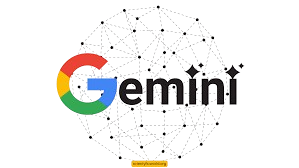
Generative AI and AI SEO / AEO / GEO? That’s a mouthful, right? And if you’re a digital marketer, a blogger, or honestly just trying to keep up with search trends, you’ve probably heard all of those terms thrown around — sometimes even in the same sentence. Maybe a bit too often.
So what do they all mean? More importantly, how do they work together? And should you be doing something differently with your website, blog, or online business?
Well, I think the answer is… kind of. But let’s break it all down before jumping to conclusions.
What Is Generative AI,SEO,GEO,AEO
A Quick Definition
So, first things first. Let’s talk about Generative AI — or rather, what it actually is.
Generative AI refers to a type of artificial intelligence designed to create content. Not just analyze or recommend — actually generate. It can be text, images, audio, even video. Tools like ChatGPT, Claude, Gemini, Midjourney, and DALL·E are all generative. They’re trained on large datasets to produce content that feels… human. Sometimes eerily so.

But here’s the thing: it’s still just math under the hood. It doesn’t think. It predicts. Each word, image, or response is a result of probability — not originality, no matter how good it looks.
Real-World Examples in Content & SEO
You’ve already seen it in action. Probably this week.
That blog post someone wrote in 12 minutes? Probably assisted by AI tools.
A support chatbot that actually understood your question? Likely using Generative AI.
What’s wild is how much this changes the flow of information online. Instead of finding articles, reading full posts, or even clicking through a website — users are getting answers instantly. This is where things start overlapping with SEO, AEO, and the new player in town — GEO.
So Then, What’s AI SEO, AEO, and GEO?
Let’s take a quick pause and define these three, because yeah, they sound similar — but they’re definitely not the same thing.
SEO-With an AI Twist
Search Engine Optimization (SEO) has been around forever. But AI SEO? That’s newer. And honestly, it’s already kind of everywhere.
When we say AI SEO, we’re talking about using AI tools to improve your chances of ranking higher on Google — or any search engine, really. It could be tools that help you:
Research keywords faster
Analyze competitors
Generate content briefs
Write optimized headlines
Predict search trends
The benefit? Efficiency. The risk? Sameness. If everyone uses the same tool to write the same kind of content, things start to blend. That’s where creativity — and yes, human input — really matter.
AEO — The Answer Engine Era
AEO, or Answer Engine Optimization, is a slightly different beast. It’s about optimizing for answer engines — tools like Google’s featured snippets, voice search, chatbots, and even AI assistants.
Why does this matter?
Because people aren’t just searching anymore. They’re asking.
Instead of typing “best blender under $100,” someone might ask, “What’s the best affordable blender for smoothies?” And they’ll expect a quick, direct answer.
AEO focuses on:
Structuring content to answer questions directly
Using schema markup
Writing in a way that makes it easy for AI to quote you
It’s less about ranking #1 — and more about being the answer that machines pick.

GEO — Generative Engine Optimization
Ah, the new kid: GEO or Generative Engine Optimization. It’s a newer concept but becoming important very quickly.
Here’s the idea: Search engines are turning into generative engines — meaning they create answers instead of just linking to them. Think of ChatGPT browsing the web, or Google’s AI summaries.
So how do you optimize for something that might rewrite your content before showing it to users?
GEO is all about:
Structuring information clearly
Writing content that can be safely quoted
Using consistent facts
Being “AI-readable” — like writing for a machine and a human
It’s a blend of SEO and AEO — but with a twist. You’re not just ranking. You’re training the machine to see your content as a trusted source.
How Generative AI Is Changing the SEO Game
More Content, Faster — But Is It Better?
Let’s be honest: It’s never been easier to publish content. With tools like Jasper, ChatGPT, or even SEO plugins built into WordPress, you can churn out blog posts in minutes.
But here’s the catch — so can everyone else.
Google, by the way, knows this. Their E-E-A-T (Experience, Expertise, Authoritativeness, Trustworthiness) framework is designed to reward content that feels real. And useful. And written by people who know what they’re talking about.
Flooding the web with AI content? That might work short-term. But long-term? The winners will be those who mix human insight with AI efficiency.
Google’s Generative Search Experiments
Let’s talk about SGE — Search Generative Experience. It’s one of the biggest shifts in search in a decade.
Instead of ten blue links, you might get:
An AI-generated summary at the top
Suggested follow-up questions
Fewer reasons to click through to websites
So where does that leave you?
If your content isn’t quoted, or referenced, or cited by the generative engine, you could lose visibility — even if you technically “rank.”
That’s why both AEO and GEO matter more now than ever before.
Practical Tips: How to Adapt Your Content Strategy
Alright. Now for the good stuff. What do you actually do with all of this?
Mix Human Insight With AI Tools
Let the tools help you brainstorm, organize, or even draft — but always go back and:
Add personal perspective
Mention real stories, even simple ones
Don’t stop using AI. Just stop using it alone.
Use language that’s slightly unsure or exploratory — it feels human
For example: “I’ve found that mixing my own notes with AI research works best — though maybe that depends on your workflow.” ← See how that’s more real?
Optimize for All 3: SEO, AEO, and GEO
Want future-proof content? Make sure it ticks all three boxes:
For SEO:
Use relevant keywords
Include strong titles, headers, meta descriptions
Internal and external links
For AEO:
Answer specific questions directly
Use lists, tables, and Q&A sections
Implement schema markup
For GEO:
Avoid filler and fluff — clarity matters
Include facts, stats, definitions (things AI can quote)
Rephrase answers in multiple ways
Is Generative AI the Future of SEO — or Its End?
Honestly? A little bit of both.
It’s revolutionizing content creation, search behavior, and online visibility. But it’s also creating a sea of sameness, low-quality spam, and confusion about what’s real.
The best thing you can do?
Use Generative AI as a tool, not a replacement
Write for people first — and machines second
Stay adaptable — because the landscape is still shifting
And don’t worry if it all feels overwhelming. You’re not the only one trying to figure this out.
FAQs About Generative AI, SEO, AEO, and GEO
What’s the difference between AEO and GEO?
AEO is about optimizing for answer engines like Google snippets or voice assistants. GEO is newer — it’s about being quotable and trustworthy for AI engines that generate answers, not just fetch them.
Can AI content rank on Google?
Yes. But only if it’s helpful. Google doesn’t care who wrote it — they care whether it meets E-E-A-T standards.
How do I optimize my blog for answer engines?
Structure your content like a conversation. Use question-based headings. Answer directly, then expand. Think like someone asking a voice assistant.
Is GEO just a trend or the next big thing?
It might be both. Right now, it’s a niche term — but as generative search grows, so will the need for GEO strategies.
It’s not just a collection of acronyms. It’s a shift in how content is created, found, and consumed. And while it might feel like the ground is moving beneath us — that’s also where the opportunity is.
Stay curious. Stay critical. And above all, stay human.


